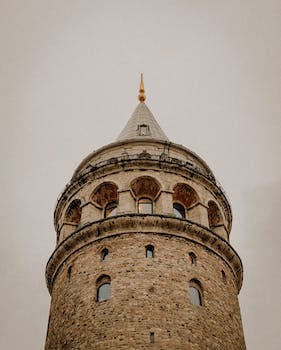

-
Table of Contents
The Ethnicity of Spaniards: A Rich Tapestry of Cultural Diversity.
Introduction
Spaniards are primarily of European ethnicity, with the majority being of Spanish descent. However, due to its historical and geographical location, Spain has experienced various influences from different cultures and ethnic groups throughout its history. These influences have contributed to the diverse ethnic makeup of the Spanish population, which includes individuals of Celtic, Roman, Visigothic, Moorish, Jewish, and Latin American descent, among others.
The Historical Origins of Spanish Ethnicity
The historical origins of Spanish ethnicity are complex and diverse, reflecting the rich tapestry of Spain's history. To understand the ethnicity of Spaniards, it is essential to delve into the various influences that have shaped the Spanish people over the centuries.
One of the earliest influences on Spanish ethnicity can be traced back to the Iberians, a prehistoric people who inhabited the Iberian Peninsula. They were later influenced by the Celts, who migrated to the region around 1000 BC. These early inhabitants laid the foundation for the ethnic diversity that would come to define Spain.
The next significant influence on Spanish ethnicity came with the arrival of the Romans in 218 BC. The Romans conquered the Iberian Peninsula and established Hispania as a province of the Roman Empire. This period of Roman rule lasted for over six centuries and left a lasting impact on the culture, language, and genetic makeup of the Spanish people.
Following the fall of the Roman Empire, Spain experienced a series of invasions and migrations that further shaped its ethnic composition. The Visigoths, a Germanic tribe, established a kingdom in Spain in the 5th century AD. Their rule lasted until the Muslim conquest of the Iberian Peninsula in the 8th century.
The Muslim conquest brought with it a significant cultural and genetic influence on the Spanish population. The Moors, as the Muslims were known, ruled over much of Spain for nearly eight centuries. During this time, they introduced new agricultural techniques, advanced mathematics and science, and left an indelible mark on Spanish architecture and cuisine.
The Reconquista, a centuries-long campaign by Christian kingdoms to retake the Iberian Peninsula from Muslim rule, began in the 8th century and culminated in the fall of Granada in 1492. This period of Christian reconquest further shaped the ethnic makeup of Spain, as Christians from various regions migrated to newly conquered territories.
The 15th and 16th centuries marked the beginning of Spain's colonial expansion, with the discovery and conquest of the Americas. This era saw the influx of indigenous peoples from the Americas, as well as African slaves brought to Spain and its colonies. The intermingling of these diverse populations further contributed to the ethnic diversity of Spaniards.
In addition to these historical influences, Spain has also been shaped by internal migrations within its borders. The movement of people from rural areas to urban centers during the industrial revolution, as well as the migration of Spaniards to other countries in search of economic opportunities, have contributed to the ethnic makeup of modern-day Spain.
Today, the ethnicity of Spaniards is a complex blend of Iberian, Celtic, Roman, Visigothic, Moorish, indigenous American, and African influences. This rich diversity is reflected in the physical appearance, cultural traditions, and regional identities of the Spanish people.
In conclusion, the historical origins of Spanish ethnicity are a testament to the complex and diverse nature of Spain's history. From the early Iberians and Celts to the Romans, Visigoths, Moors, and subsequent waves of migration, Spain's ethnic composition has been shaped by a multitude of influences. Understanding the historical origins of Spanish ethnicity is crucial to appreciating the rich tapestry of Spain's cultural heritage.
Cultural Diversity Among Spaniards: Exploring Regional Differences

The Ethnicity of Spaniards
Spain is a country known for its rich cultural diversity, with a long and complex history that has shaped the ethnic makeup of its people. While the majority of Spaniards identify as ethnically Spanish, there are also significant regional differences that contribute to the country's diverse population.
One of the key factors that has influenced the ethnic composition of Spaniards is the country's geographical location. Situated at the crossroads of Europe and Africa, Spain has been a melting pot of different cultures and civilizations throughout history. This has resulted in a diverse mix of ethnicities, with influences from the Iberians, Celts, Romans, Visigoths, Moors, and others.
In terms of regional differences, one of the most notable is the presence of the Basque people in the northern part of the country. The Basques are an ancient ethnic group with a distinct language and culture. They have inhabited the region for thousands of years and have managed to preserve their unique identity despite various historical challenges. The Basque Country is known for its strong sense of regional pride and its own autonomous government.
Moving towards the east, Catalonia is another region with a distinct cultural identity. The Catalans have their own language, Catalan, which is widely spoken alongside Spanish. Catalonia has a long history of seeking greater autonomy from the central government in Madrid, and this has contributed to a strong sense of regional identity among its people.
In the southern part of Spain, Andalusia is known for its Moorish influence. During the medieval period, the Moors ruled over much of the Iberian Peninsula, leaving a lasting impact on the region's culture, architecture, and cuisine. The Andalusians are proud of their Moorish heritage and celebrate it through various cultural events and festivals.
Moving towards the northwest, Galicia is a region with Celtic roots. The Galicians have their own language, Galician, which is closely related to Portuguese. The region is known for its lush green landscapes, traditional music, and unique culinary traditions, such as the famous Galician seafood.
In addition to these regional differences, Spain is also home to various immigrant communities. Over the years, the country has attracted people from different parts of the world, including Latin America, North Africa, and Eastern Europe. These immigrants have added to the cultural diversity of Spain, bringing their own traditions, languages, and customs.
Despite these regional and immigrant influences, it is important to note that the majority of Spaniards still identify as ethnically Spanish. The Spanish language, which is spoken throughout the country, serves as a unifying factor that transcends regional differences. Additionally, there is a shared sense of national identity among Spaniards, which is often celebrated through national holidays and cultural events.
In conclusion, the ethnicity of Spaniards is a complex and diverse topic. While the majority of Spaniards identify as ethnically Spanish, there are significant regional differences that contribute to the country's cultural diversity. The Basques, Catalans, Andalusians, and Galicians are just a few examples of the distinct regional identities within Spain. Furthermore, the country's history of immigration has added to its ethnic makeup, with various communities from around the world calling Spain their home. Despite these differences, there is a shared sense of national identity among Spaniards, which is reflected in the country's language and cultural traditions.
The Influence of Migration on the Ethnic Makeup of Spaniards
The Influence of Migration on the Ethnic Makeup of Spaniards
Spain, a country located in southwestern Europe, has a rich and diverse ethnic makeup that has been shaped by centuries of migration. Throughout its history, Spain has been a melting pot of different cultures and ethnicities, resulting in a unique blend of people who identify as Spaniards. This article will explore the influence of migration on the ethnic makeup of Spaniards, highlighting the various groups that have contributed to the country's diversity.
One of the earliest migrations that had a significant impact on the ethnic makeup of Spaniards was the arrival of the Romans. In 218 BC, the Romans conquered the Iberian Peninsula, which is present-day Spain and Portugal. They brought with them their language, Latin, and their customs, which heavily influenced the local population. Over time, the Romans intermarried with the local inhabitants, resulting in a mixed ethnic group known as Hispano-Romans.
Following the fall of the Roman Empire, Spain experienced waves of migration from different groups. The Visigoths, a Germanic tribe, invaded the Iberian Peninsula in the 5th century AD and established their kingdom. They brought with them their own language and culture, further diversifying the ethnic makeup of Spaniards.
In the 8th century AD, Spain was invaded by the Moors, a Muslim group from North Africa. The Moors ruled over the Iberian Peninsula for nearly 800 years, leaving a lasting impact on the country's culture, architecture, and language. During this period, many Spaniards converted to Islam and intermarried with the Moors, resulting in a significant Arab influence on the ethnic makeup of Spaniards.
The Reconquista, a long and bloody period of Christian reconquest, began in the 11th century and lasted until the 15th century. As Christian kingdoms gradually regained control over the Iberian Peninsula, many Muslims and Jews were expelled or forced to convert to Christianity. This led to a significant decrease in the Arab and Jewish populations in Spain, but their influence on the ethnic makeup of Spaniards remained.
In addition to these historical migrations, Spain experienced significant migration during the 20th century. After the Spanish Civil War (1936-1939), many Spaniards fled the country due to political persecution and economic hardship. They sought refuge in countries such as France, Mexico, Argentina, and Venezuela. These migrations resulted in a diaspora of Spaniards around the world, contributing to the global presence of the Spanish ethnicity.
Furthermore, Spain has also been a destination for migrants from other countries. In recent decades, Spain has seen an influx of immigrants from Latin America, North Africa, and Eastern Europe. These migrants have brought their own cultures, languages, and traditions, further enriching the ethnic diversity of Spaniards.
In conclusion, the ethnic makeup of Spaniards has been shaped by centuries of migration. From the Romans to the Moors, and from the Visigoths to the recent influx of immigrants, Spain has been a melting pot of different cultures and ethnicities. The influence of these migrations can be seen in the language, culture, and physical appearance of Spaniards today. Despite the diverse origins of its people, Spain remains a united nation with a shared identity as Spaniards.
Q&A
1. What is the ethnicity of Spaniards?
Spaniards are primarily of European ethnicity, with a majority being of Spanish or Iberian descent.
2. Are there any other ethnic groups present in Spain?
Yes, Spain is a diverse country with various ethnic groups. Some notable ethnic minorities include Basques, Catalans, Galicians, and Romani people.
3. Has Spain experienced any significant immigration that has impacted its ethnic makeup?
Yes, Spain has experienced significant immigration in recent decades, particularly from Latin America, North Africa, and Eastern Europe. This has contributed to a more diverse ethnic makeup in the country.
Conclusion
In conclusion, the ethnicity of Spaniards is diverse and complex, reflecting the country's rich history and cultural influences. Spaniards can have various ethnic backgrounds, including Iberian, Celtic, Roman, Visigothic, Moorish, and Jewish ancestry, among others. This diversity contributes to the unique cultural tapestry of Spain.












